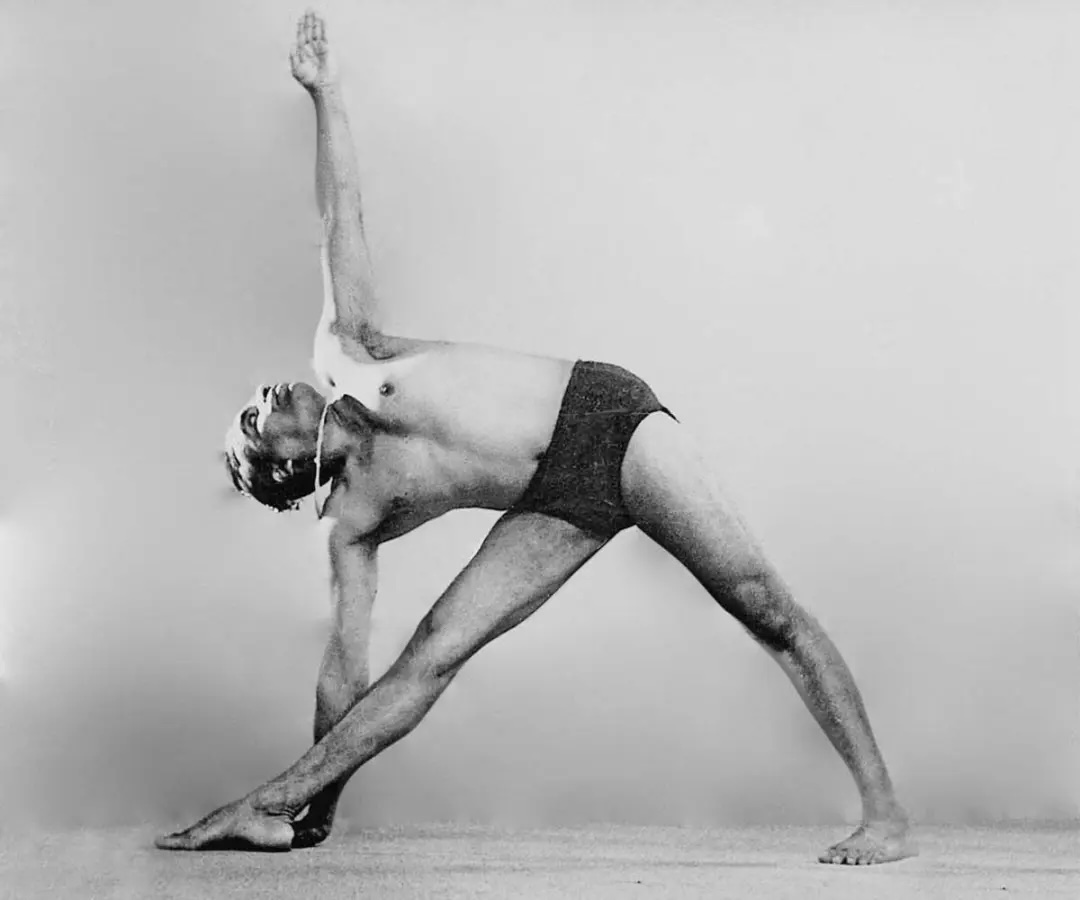त्रिकोणासन (Trikonāsana) - Triangle Pose in Sanskrit

Etymology and Sanskrit Roots
The Sanskrit term trikonāsana consists of:
- Tri (त्रि): Three
- Koṇa (कोण): Angle
- Āsana (आसन): Pose
This name perfectly describes the three distinct angles formed by the legs, torso, and arm in the full expression of the pose.
Meaning and Cultural Significance
In yogic tradition, trikonāsana represents:
- The trinity concept (body-mind-spirit)
- Geometric perfection in bodily alignment
- Lateral expansion symbolizing growth and openness
Ancient texts describe this as a pose that "creates space in the body while grounding through the feet."
Common Usage in Sanskrit Yoga
त्रिकोणासन में विस्तार करें (trikonāsane vistāra kareṁ) - "Expand in triangle pose"
पार्श्व में झुकें (pārśva meṁ jhukeṁ) - "Bend to the side"
पैरों को दृढ़ जमाएं (pairoṁ ko dṛḍha jamāeṁ) - "Anchor the feet firmly"
Related Sanskrit Yoga Words
- उत्थित त्रिकोणासन (utthita trikonāsana): Extended triangle pose
- पार्श्वकोणासन (pārśvakoṇāsana): Side angle pose
- स्थिति (sthiti): Steady position
- विस्तार (vistāra): Expansion
Learning Points for Yoga Students
Alignment Foundations:
- Front heel aligns with back arch
- Hips stay open to the side
- Spine maintains length
Breath Pattern:
- Inhale to prepare
- Exhale into the lateral bend
Common Mistakes:
- Collapsing chest forward
- Over-rotating the hips
- Locking the front knee
Sanskrit Grammar Notes
This is a Tatpurusha compound where:
- The modifying elements (tri + koṇa) relate directly to the main noun (āsana)
- The word order follows numerical-qualifier-object structure
- The sandhi (combination) rules create the smooth "trikonā" sound
Physical Benefits and Practice
Regular practice develops:
- Strength in thighs, knees and ankles
- Flexibility in hips, groins and hamstrings
- Stimulation of abdominal organs
- Relief from back pain and stiffness
- Improved balance and spatial awareness
Practice Tip: Imagine your body pressed between two panes of glass to maintain the lateral plane.
Cultural Context
In Indian iconography:
- Triangles represent:
- The three gunas (qualities of nature)
- The trinity of Brahma-Vishnu-Shiva
- The three levels of existence
The pose embodies the yogic principle of "sthira sukham āsanam" (steady comfortable posture).
Modern Usage
Contemporary applications include:
- A key pose in Iyengar and Ashtanga systems
- Often sequenced after warrior poses
- Used therapeutically for scoliosis
- Modified with blocks for accessibility
Many teachers emphasize its spinal decompression benefits.
Conclusion
Trikonāsana offers profound benefits beyond its geometric beauty. By understanding its Sanskrit roots and cultural context, practitioners can access deeper layers of this foundational posture. Whether used for physical alignment or meditative focus, the triangle pose remains essential to yoga practice.
For further study: Explore how this pose prepares the body for more advanced twists like parivṛtta trikonāsana (revolved triangle pose).
#TrianglePose #YogaAlignment #SanskritYoga #StandingPoses #HipOpeners #Trikonasana